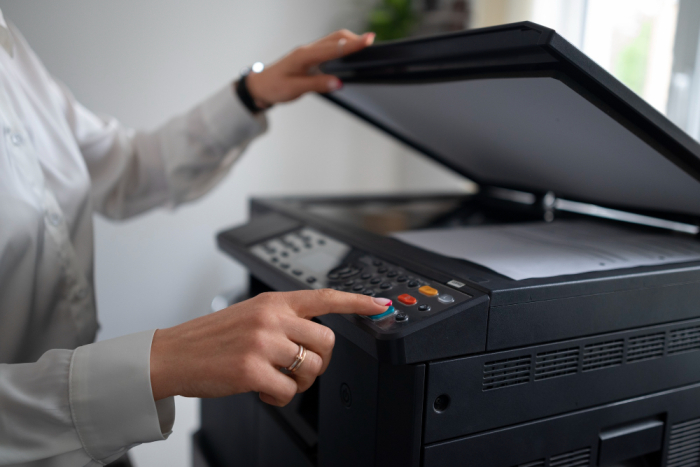In today’s fast-paced world, efficiency and productivity are essential, and nothing can be more frustrating than a printer that takes its sweet time to produce documents. A slow printer can disrupt workflow, delay important tasks, and test your patience. If you’ve ever wondered, “Why is my printer printing so slow?” you’re not alone. In this comprehensive guide, we will explore the common reasons behind sluggish printing and provide practical solutions to help you get your printer back up to speed.
Understanding the Frustration of Slow Printing
A slow printer can be a source of frustration, especially when you’re working on time-sensitive tasks. It can hinder your productivity and lead to delays in completing important documents or projects. To address the issue effectively, it’s crucial to understand why your printer might be printing slowly.
Common Causes
Several factors can contribute to slow printing on your printer. These include:
- Print Quality Settings: Printing at the highest quality settings, such as “Best” or “High Resolution,” can significantly slow down the printing process. These settings involve printing at a higher DPI (dots per inch), resulting in more detail but longer printing times.
- Large Print Jobs: Printing large documents, especially those with high-resolution images or graphics, can take more time. The printer needs to process and render these complex files before printing them.
- Outdated Printer Drivers: Outdated or incompatible printer drivers can hinder communication between your computer and the printer, resulting in slow printing.
- Network or Connectivity Issues: If your printer is connected over a network, issues with Wi-Fi signal strength, network congestion, or a slow network connection can cause delays.
- Printer Queue Problems: A backlog of print jobs in the printer queue can slow down the printing process. Pending or stuck print jobs can cause subsequent jobs to wait their turn.
- Low Ink or Toner Levels: Running low on ink or toner can lead to slower printing as the printer conservatively uses the remaining supplies.
- USB Connection Issues: If you’re using a USB connection, a damaged or poorly functioning USB cable can cause slow printing.
- Printer Hardware Problems: Physical issues within the printer, such as paper jams, hardware malfunctions, or worn-out components, can lead to slow or interrupted printing.
Now that we’ve identified potential causes, let’s explore practical solutions to speed up your printer.
Troubleshooting
- Adjust Print Quality Settings:
- Review your print quality settings before printing. If you don’t need the highest quality output, consider using the “Normal” or “Draft” settings, which will print faster while using less ink or toner.
- Optimize Print Jobs:
- For large documents with images or graphics, consider optimizing the file size by reducing image resolutions or compressing images. Use software tools or online services to shrink file sizes without compromising quality.
- Update Printer Drivers:
- Outdated printer drivers can significantly affect print speed. Visit the manufacturer’s website or use the automatic driver update feature on your computer to install the latest drivers for your printer model.
- Check Network and Connectivity:
- If your printer is connected over Wi-Fi, ensure a stable and strong signal. Consider relocating your printer closer to the router to improve connectivity.
- For wired connections, check the Ethernet cable for damage and make sure it’s securely connected.
- Manage Print Queue:
- Open the print queue on your computer and cancel any pending or stuck print jobs. Clearing the queue can resolve delays caused by backlog.
- Monitor Ink or Toner Levels:
- Regularly check your printer’s ink or toner levels and replace cartridges as needed. Running out of ink or toner can result in slower printing as the printer conserves resources.
- USB Cable Check:
- If you’re using a USB connection, ensure that the USB cable is not damaged or frayed. Replace it if necessary to establish a reliable connection.
- Perform Printer Maintenance:
- Regularly clean your printer’s printhead and rollers to ensure smooth operation. Dust and debris can accumulate over time and affect print quality and speed.
- Consider a Wired Connection:
- If your printer supports both Wi-Fi and wired (Ethernet) connections, consider using a wired connection for a more stable and faster printing experience.
- Check for Hardware Issues:
- Physically inspect your printer for any hardware problems, such as paper jams, worn-out rollers, or malfunctioning components. Address these issues as needed to restore normal printing speed.
- Upgrade Printer Hardware:
- If your printer is significantly outdated and slow, consider upgrading to a newer model with faster printing capabilities.
- Update Firmware:
- Manufacturers release firmware updates to address known issues and enhance printer performance. Check for and install firmware updates for your printer model to potentially improve printing speed.
Conclusion
A slow printer can be a frustrating obstacle in your daily tasks, but with the systematic troubleshooting steps outlined in this guide, you can often identify and resolve the underlying issues. By adjusting print settings, updating drivers, managing print queues, and maintaining your printer, you can significantly improve printing speed and efficiency.
Remember that regular maintenance and keeping your printer’s components in good condition are key to preventing future slowdowns. Additionally, staying vigilant about ink or toner levels and using optimized file formats for printing can further enhance your overall printing experience.
Image Tags: Printer Printing slowsolutionTroubleshoot

